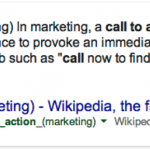Online Freelancers: Your Free Website Is Waiting
With hundreds of thousands of freelance jobs being posted every month on platforms like Odesk and Elance (who reportedly posted over 113,000 jobs in the last 30 days alone), there’s little question that companies big and small are increasingly turning to the freelance community to get their jobs done.
Besides a killer profile page on one of these websites, what can a freelancer do to get noticed online? The answer, not surprisingly, comes in the form of a portfolio website. Long gone are the days that a website would take months and thousands of dollars to build. With website builders, freelancers can create their own website for free and with next to no prior experience in coding or design. In this blog post, we’ll take a look at the reason all online freelancers should be taking advantage of free website building platforms.
Stepping Away from PDF culture
It used to be that, for a writer to get noticed, they would have to wander through their career with writing samples in their bags. Artists, models and designers suffered a similar fate, their black look books and portfolios virtually glued under their arm. To these industries, the contemporary equivalent of the black folder is often seen as the .pdf, a downloadable file to be sent to anyone whose gaze lingered more than a second or two. But .pdfs are cumbersome, data-heavy files, easily lost in the slurry of other information your average creative director or curator has to download on a daily basis. The obvious answer to the portfolio in the form of a .pdf is a website, but until recently, those without coding knowledge have been left stranded in a sea of unintelligible language, unable to move pixels left or right.
From these perennial problems emerged website builder, and with them hundreds of pre-designed professional templates that a creative can effortlessly add content to and customize according to their individual needs.
Portfolio websites allow creative freelancers to present their work in non-linear format, creating a more intuitive process for the industry professionals interested in hiring them. Instead of sending hyperlinks to videos or audio files, any and all content can be uploaded to one place, making it easier for potential clients to get a full picture of what you do.
Best yet, website builders cost next to nothing to use and maintain. Pre-designed templates are often free to use, with the only costs involved amounting to a small monthly fee for hosting and site maintenance, and a comparatively miniscule fee for a domain.
4 Tips For Building A Successful Portfolio Website
-
Laser in On What Matters: We’ve said it a dozen times and we’ll say it again, users have very short attention spans, and if they can’t find the information that matters to them in a matter of a few seconds, they’ll continue on their way. No matter the field they operate in, freelancers need to zero in on the content your industry cherishes. If you’re a model, this amounts to your measurements and a great cover image. If you’re a writer, meanwhile, you’d be better to showcase your most recent literary accomplishments, whether it’s a publishing deal or an article in a sought-after magazine or blog. Put the content that matters front and centre on your homepage, and leave other details for further down or other pages.
-
Keep it Online: There is little need to make any content on your website available only through download. Visitors want to be able to access and pull up your information immediately, not have to wait for it to open in a pdf viewer. One notable exception to this rule is in the case of models and entertainers: A downloadable link of your comp card or portfolio is still a useful asset in these industries.
-
Update Update Update: Essential to kick-starting your freelance career is to show prospective clients that you’re busy. Make sure to keep your website populated with your latest projects, as well as news and updates on upcoming work.
-
Leave No Links Unturned: If you start a website, finish it or let it go. Unfinished or slobby websites lack content, contain outdated or obsolete links, and contain pages and images that act as fillers as opposed to useful information. For visitors to your website, these details indicate your level of enthusiasm and commitment to your career.
Image Credits
Gamestorming Workshop by Sebastiaan ter Burg at Flickr Creative Commons
Most Recommended Articles:
About Bee Kay
Bee Kay is an artist and writer with a knack for writing about the intersections between web design and everyday life.





